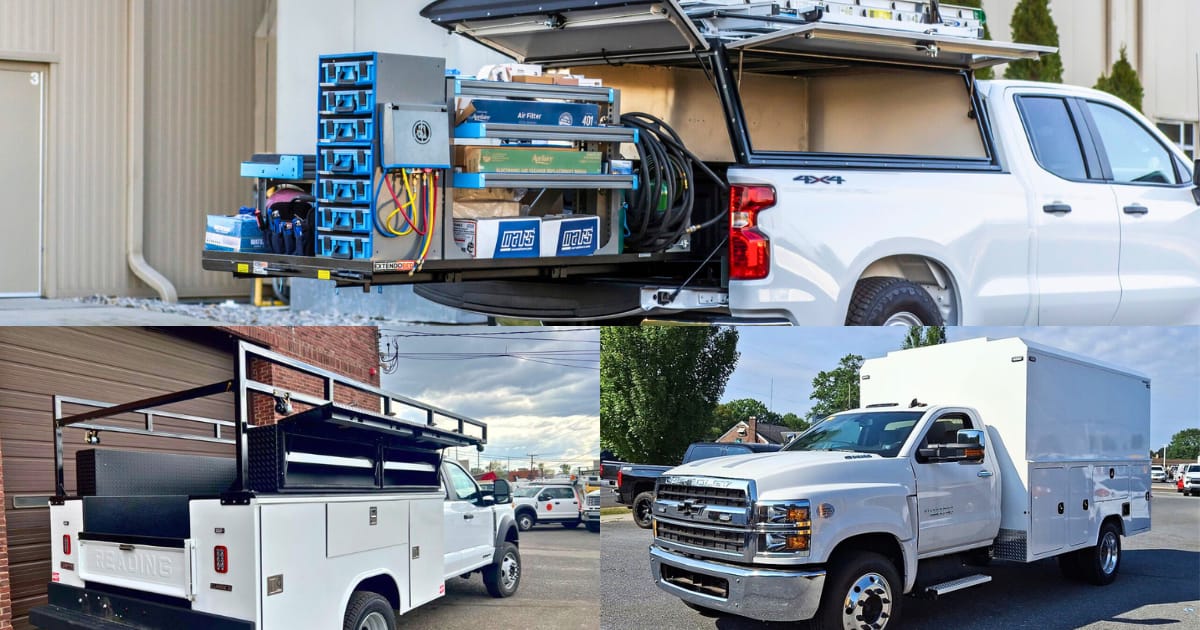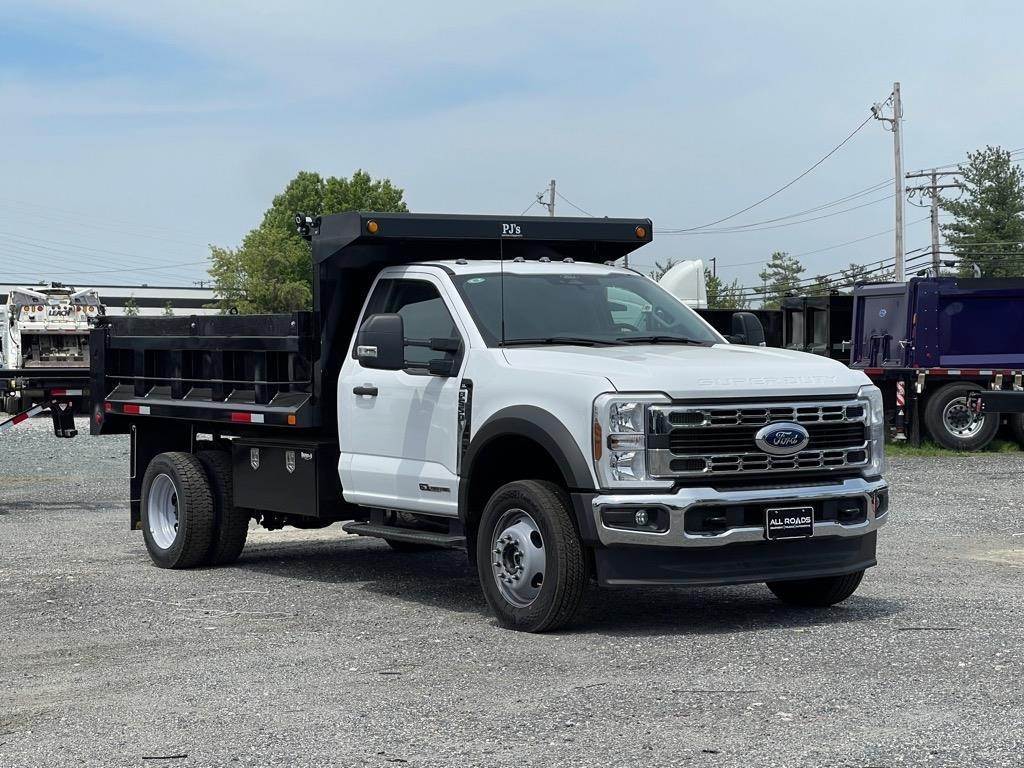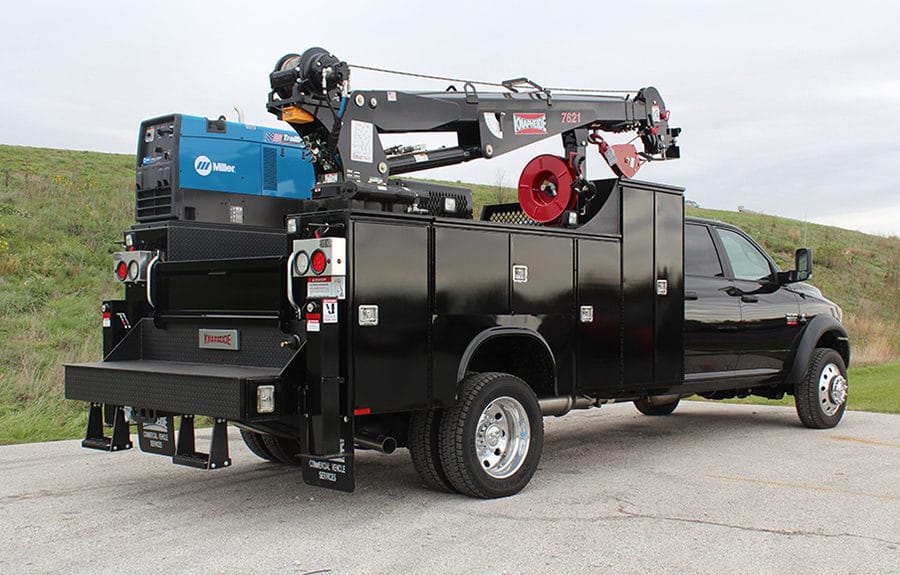- The Upfit Insider
- Posts
- Standard Upfit vs Custom Upfits: Which One Saves More for Fleets
Standard Upfit vs Custom Upfits: Which One Saves More for Fleets
The real-world cost, lead time, and ROI difference between standard and custom truck builds — and why the best strategy might be a mix of both.

Standard Upfit vs Custom Upfits: The Real Cost
You’ve got three service trucks grounded, and the phones won’t stop ringing.
Your crews are ready, the jobs are booked—but the trucks? Still waiting on installs.
That’s the pain point behind every standard upfit vs custom upfits decision.
Do you wait eight weeks for a perfect, specialized build—or grab a standard truck off the lot and get back to work tomorrow?
Here’s the truth: the best upfit isn’t about looks or features. It’s about ROI—how fast it earns, how long it lasts, and how much it costs you in downtime.
1. What a “Standard Upfit” Really Means
A standard upfit is a pre-engineered commercial vehicle package—ladder racks, shelving, dump inserts, or service bodies—built around common trades and stocked by most dealers.
If you walk into your local Ford, Chevy, or Ram commercial dealership, those trucks sitting in the fleet lot? Most are standard packages. They’re designed for speed, consistency, and broad appeal across HVAC, plumbing, municipal, and construction fleets.
Standard packages often cost 20–30% less than custom upfits and deliver in 3–5 business days instead of months. That’s huge when a grounded truck bleeds $200–$500 per day in lost productivity.
And there’s nothing wrong with taking a standard in-stock truck—the body already installed—and partnering with an upfitter later to add accessories, lighting, or storage upgrades. That hybrid approach keeps you moving without committing to a full custom build.
If you’re new to this side of the business, check out What Is an Upfitter and How Vehicle Upfitting Solutions Transform Your Fleet to see how expert upfitters turn plain chassis into profit-driven assets—and where to find the good ones.
2. When Custom Upfits Pay Off (The Dump Truck Example)
A fleet I worked with years ago spec’d three standard steel dump trucks for snow and salt routes. The idea was simple — save money upfront, get them on the road fast.
By the second winter, all three had rotted floors, cracked hinges, and failing harnesses. Salt had chewed through the paint, and every repair quote looked worse than the last.
That’s the reality when standard builds meet extreme environments. Salt doesn’t care about savings.
A custom upfit in that case means stainless steel dump bodies, sealed wiring harnesses, undercoating protection, and heat-treated hardware — engineered specifically for corrosion zones. Yes, the upfront cost was about $7,000 higher per truck, but downtime dropped by nearly half, and the units ran five winters straight with minimal issues.
Custom upfits aren’t about flash — they’re about function. For fleets running in salt, snow, or heavy construction zones, custom builds give you durability, better weight distribution, and fewer corrosion headaches.
If you’re battling repair costs already, How to Handle Work Truck Repair Costs Before They Handle You covers how to spot inflated estimates, control labor costs, and stretch fleet life through smarter specs.

This dump body is a great option if it’s on the lot for the right application — but it’s not the best choice for a municipal snow and ice truck where corrosion protection and custom specs matter most.
🎁 Become a Founding Member ($5/mo)
Get access to:
Work Truck ROI Calculator
Operator-First Ergonomic Upfit Playbook
Snowplow Mastery Guide
Fleet Spec Playbook
Spec Fail Prevention Workbook
3. The ROI Breakdown (With Real-World Scenarios)
Here’s how commercial vehicle fleets compare their standard upfit vs custom upfits costs when you break it down by real-world performance and repair data:
Upfit Type | Common Specification or Build Error | Fleet Cost Impact (Est.) | Operational Effect | Corrective Fix or Custom Spec Adjustment |
|---|---|---|---|---|
Dump Truck | Undersized PTO or pump (e.g., <35 HP hydraulic) | $3,500–$4,000 | Slow hoist cycle times, overheating under load | Upgrade to 50+ HP PTO/pump matched to cylinder size and flow demand |
Hooklift Truck | Incorrect subframe angle or CA mismatch | $4,000–$5,000 | Poor container fitment, tipping imbalance, chassis twist | Verify OEM CA/CT specs; adjust frame height and angle to hook manufacturer spec |
Utility Van | Fixed shelving layout not aligned to job type | $1,200–$1,600 | Tool access inefficiency, safety risk from shifting cargo | Install adjustable, rattle-free shelving and partition storage kits |
Aerial Unit | Missing inverter or improper PTO control | $2,000–$2,500 | No power for tools or laptop systems onsite | Integrate 3–5 kW inverter with smart load management and PTO interlock |
Mechanic Truck | Underrated crane base or stabilizer setup | $5,000–$6,500 | Chassis flex, unsafe lifting operations | Reinforce subframe, upgrade outriggers, verify ASTM stabilizer rating |
Snowplow Truck | Inadequate alternator and battery capacity | $1,800–$2,400 | Electrical overload, frequent component burnout | Upgrade to dual alternator setup (200–300 A system) with AGM batteries |
Landscaper Dump | Bed floor too light-gauge for heavy debris | $2,200–$3,000 | Floor buckling, weld failure | Use 10–12 ga. treadplate with crossmember reinforcement |
Practical Steps for Fleet Buyers
Start with your trade.
DPWs and utilities: Focus on corrosion resistance and electrical load.
Construction and waste fleets: Prioritize hydraulic power, capacity, and stability.
Compare total cost of ownership—not sticker price.
A $2,500 upgrade today can save $8,000 in corrosion repairs over three winters.Measure downtime.
If your trucks generate $400/day, shaving even a week off lead time equals $2,800 in recovered revenue.Audit operator input.
The best-performing fleets involve the people who actually use the truck. Ask your mechanics and drivers what slows them down.Plan scalability.
Standard upfits are great for repeat builds and uniform fleets. Custom setups are better if you handle specialized work like vacuum excavation or telecom installation.
For DPWs, utilities, and construction fleets, the decision isn’t just upfront price—it’s lifecycle value.
Standard upfits: best for replacement units, fast deployments, or short-term contracts.
Custom upfits: best for specialized work, safety compliance, and long-term ROI.
Many fleets blend both — buying standard trucks off the lot, then letting their trusted upfitter handle lighting, hydraulics, and custom storage later. That’s often the best middle ground between speed and precision.
If you’re still defining what makes a good upfit, What Is an Upfit on a Work Truck breaks down how a body, accessories, and layout can turn a commercial vehicle into a jobsite powerhouse.

This custom mechanic truck is not something you’ll find on the lot of your local dealership. If you need a setup like this, you’re better off custom ordering the chassis and coordinating directly with your upfitter.
4. How to Choose the Right Upfit Strategy
Here’s a framework top fleet managers use to make the call:
Define non-negotiables. What must every truck do to earn revenue?
Track downtime costs. Each idle day hurts your bottom line.
Ask for turnaround documentation. Reliable upfitters show their average delivery times.
Compare total value, not sticker price. A cheaper unit that costs two extra weeks of downtime isn’t cheaper.
Plan for resale. Custom builds take longer to sell, but deliver stronger ROI while in service.
Whether you manage five or five hundred commercial vehicles, mixing standard and custom upfits gives you the fastest, most cost-effective path to uptime and long-term efficiency.
Founding Members get full access to calculators, playbooks, and the complete upfit strategy toolkit.
The Upfit Insider Merch
We’re planning The Upfit Insider’s first merch drop — and we want your vote 👇
Which merch should we launch first? |
Update Your Profile
Help us send smarter, more relevant fleet insights.
👇 Update your info so we know what trucks, brands, and roles to tailor content for:
Wrap-Up
The smartest fleets don’t just buy trucks—they buy uptime.
Every commercial vehicle in your fleet should do one thing: make you money. Whether it’s a standard dump off the dealer lot or a fully engineered utility body, every upfit should pay you back in time saved and performance gained.
And sometimes the best move isn’t either/or.
It’s this: get the truck now, upfit it right, and keep it earning.
What’s the worst spec fail you’ve seen in your career?
—
Leyhan
Founder, The Upfit Insider
Reply